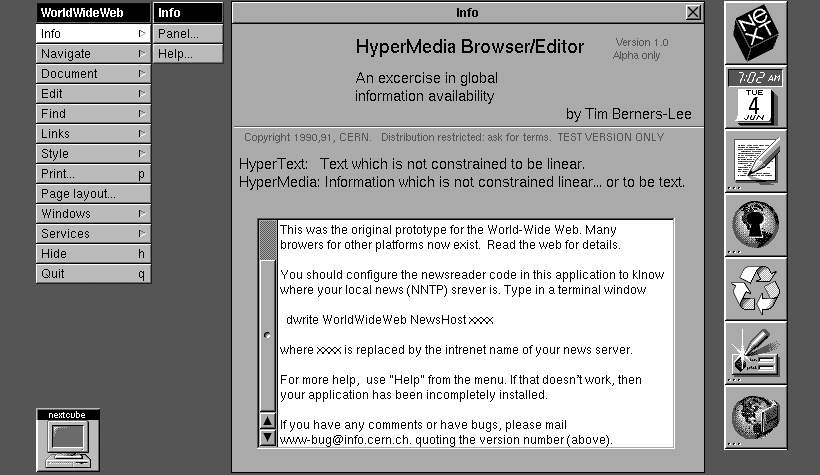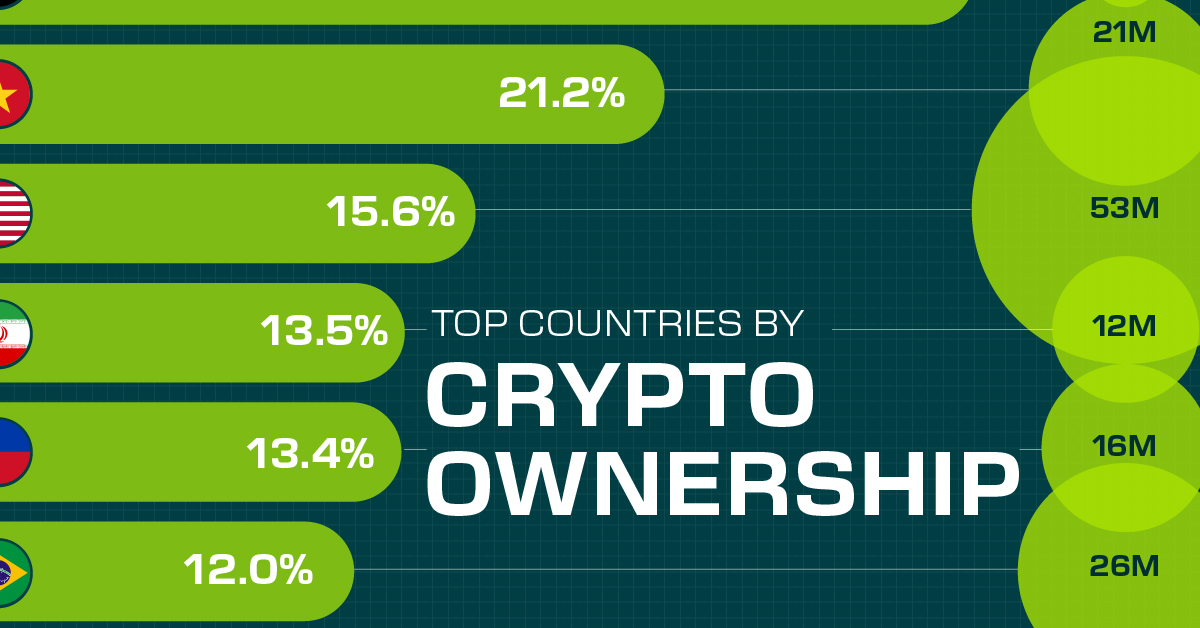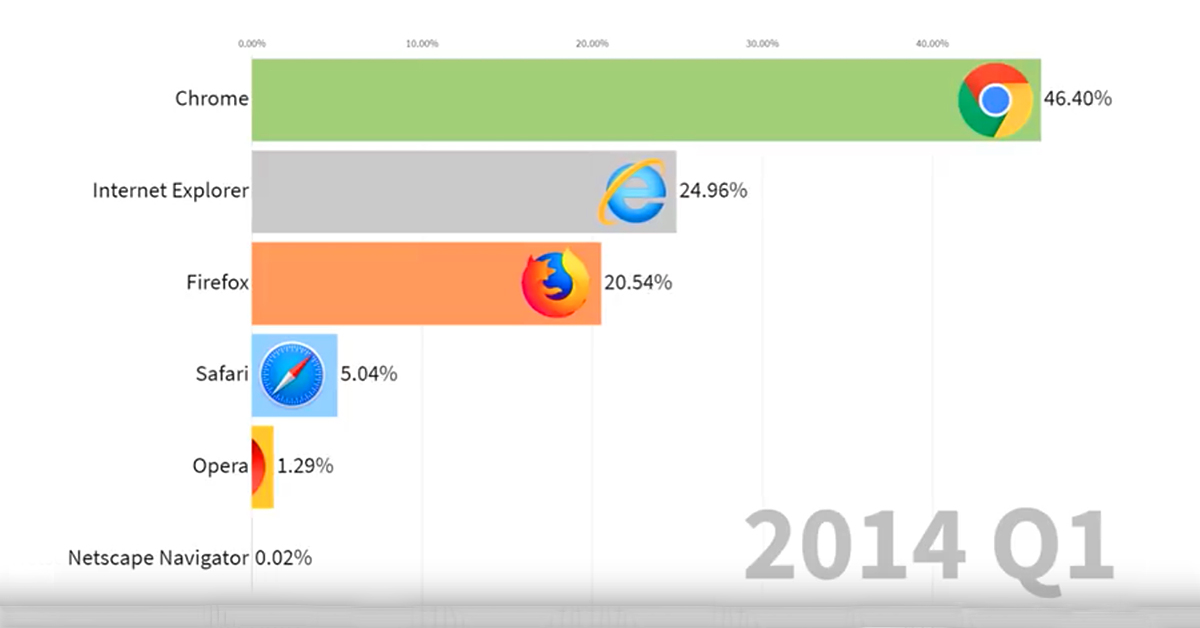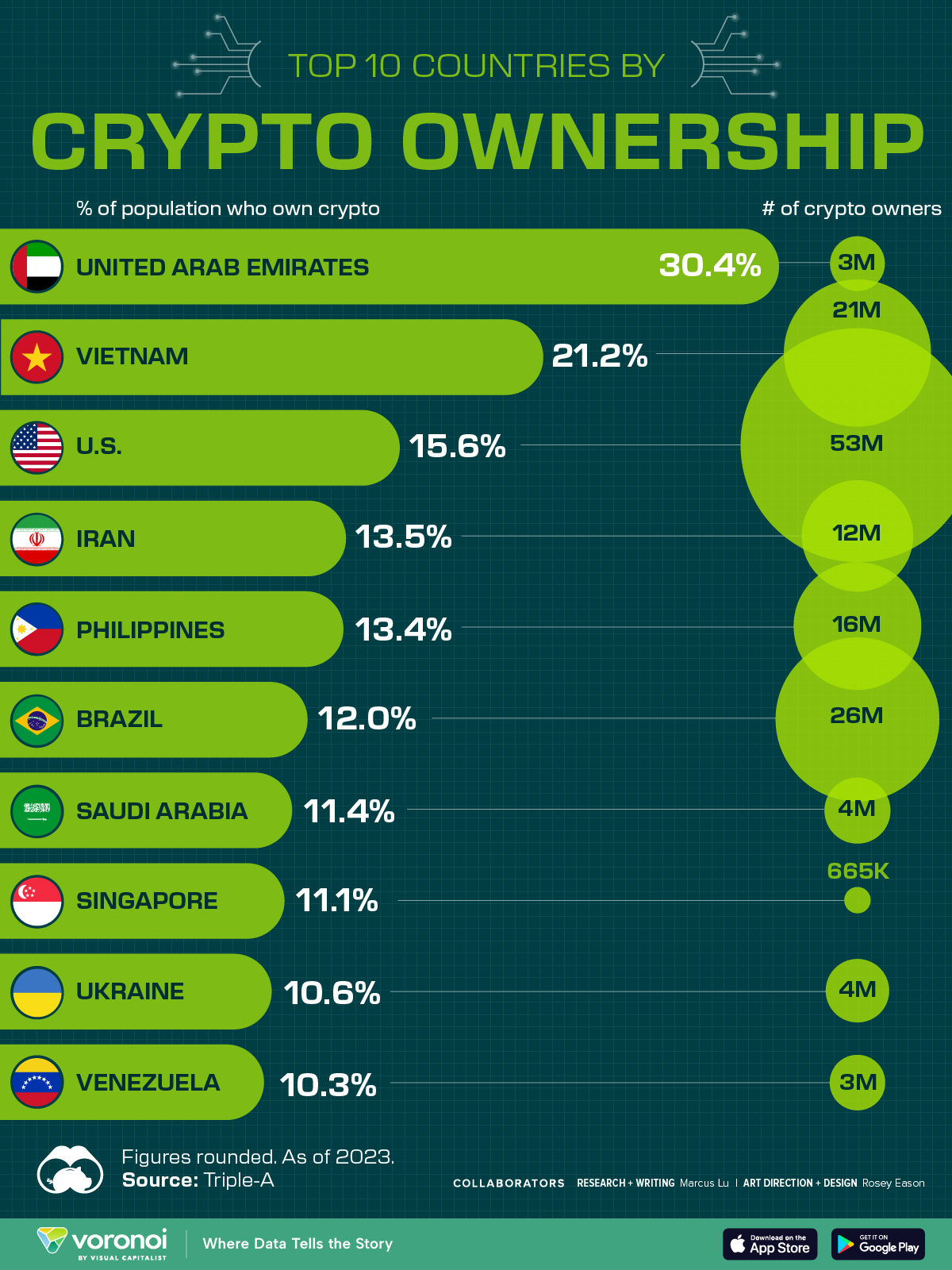Technology
Internet Browser Market Share (1996–2019)
Internet Browser Market Share (1996–2019)
Web browsers are a ubiquitous part of the internet experience and one of the most commonly used digital tools of the modern era.
Since the first rudimentary interfaces were created in the 1990s, a number of browsers have entered the market, with a select few achieving market dominance over our access to web content.
Today’s bar chart race video, by the YouTube channel Data is Beautiful, is a nostalgic look back at how people used to access the internet, from Mosaic to Chrome.
The First Wave of Browsers
Simply put, web browsers are the software applications that act as our portal to the internet. Today, aside from the occasional pop-up box, we barely notice them. In the early ’90s though, when the web was in its infancy, the crude, boxy interfaces were a revolutionary step in making the internet usable to people with access to a computer.
The first step in this journey came in 1990, when the legendary Tim Berners-Lee developed the first-ever web browser called “WorldWideWeb” – later renamed Nexus. Nexus was a graphical user interface (GUI) that allowed users to view text on web pages. Images were still beyond reach, but since most connections were dial-up, that wasn’t much of a limitation at the time.

The precurser to the modern browser was Mosaic, originally developed as a temporary project by the the University of Illinois at Urbana–Champaign (UIUC) and the National Center for Supercomputing Applications (NCSA).
After his graduation from UIUC in 1993, Marc Andreessen teamed up with Jim Clark, the founder of Silicon Graphics, to produce a commercial version of the browser. The resulting software, Netscape Navigator, became the first widely used browser, moving the internet from an abstract concept to a network that was accessible to everyday people. The company soon staged a wildly popular IPO, which saw the 16-month-old startup reach a valuation of nearly $3 billion.
Naturally, the fanfare surrounding Netscape had captured Microsoft’s attention. Immediately after Netscape’s IPO, the first version of Internet Explorer (building off a licensed version of Mozilla) was released. The browser wars had begun.
The Internet Explorer Era
In 1995, Bill Gates was looking to capitalize on the “Internet Tidal Wave”, and was up to the challenge of eating into Netscape’s market share, which stood at about 90%.
A new competitor “born” on the Internet is Netscape. We have to match and beat their offerings…
– Bill Gates
Ultimately, Netscape was no match for Internet Explorer (IE) once it was bundled with the Windows operating system. By the dawn of the new millennium (beware Y2K!) the situation had reversed, with IE capturing over 75% of the browser market share.
With Netscape mostly out of the picture, IE had a stranglehold on the market. In fact, Microsoft’s position was so comfortable that after IE6 was released 2001, the next full version wouldn’t ship until 2006.
It was during this time that a new player came onto the scene. Mozilla Firefox was officially launched in 2004, seeing over 60 million downloads within its first nine months. For the first time in years, Microsoft began to feel the heat of competition.
Goliath and Goliath
Despite the growing popularity for Mozilla Firefox, it was a browser backed by another tech giant that would eventually lead to IE’s downfall – Google Chrome.
Chrome was pitched to the public in 2008 as “a fresh take on the browser”. While Microsoft struggled with open web standards, Chrome’s source code was openly available through Google’s Chromium project.
By 2011, Firefox and Chrome had eroded IE’s market share to below 50%, and a year later, Chrome would end Internet Explorer’s 14-year reign as the world’s top internet browser.
Today, the browser market has come full circle. Chrome has now become the dominant browser on the market, while competitors fight to increase their single-digit market shares. IE has dropped to fourth place.
Looking Back at the Peaks
In the 25 years since Netscape gave people access to the internet, a few browsers have had their moment in the sun. Here are the years of peak market share for all the major browsers:
| Browser | Peak Market Share | Peak Year |
|---|---|---|
| Netscape Navigator | 90% | 1995 |
| Internet Explorer | 95% | 2004 |
| Opera | 3% | 2009 |
| Mozilla Firefox | 32% | 2010 |
| Safari | 7% | 2012 |
Once a browser becomes popular, it can be incredibly difficult to carve into its market share. Even during the height of the iPhone era, Apple’s browser, Safari, was only able to manage a 7% market share.
For now, it looks like Chrome will continue to be the world’s preferred method of experiencing the internet. If Chrome’s current trajectory continues, it could become the third major browser to surpass a 90% market share.
Technology
Countries With the Highest Rates of Crypto Ownership
While the U.S. is a major market for cryptocurrencies, two countries surpass it in terms of their rates of crypto ownership.

Countries With the Highest Rates of Crypto Ownership
This was originally posted on our Voronoi app. Download the app for free on iOS or Android and discover incredible data-driven charts from a variety of trusted sources.
This graphic ranks the top 10 countries by their rate of cryptocurrency ownership, which is the percentage of the population that owns crypto. These figures come from crypto payment gateway, Triple-A, and are as of 2023.
Data and Highlights
The table below lists the rates of crypto ownership in the top 10 countries, as well as the number of people this amounts to.
| Country | % of Population Who Own Crypto | # of Crypto Owners |
|---|---|---|
| 🇦🇪 United Arab Emirates | 30.4 | 3M |
| 🇻🇳 Vietnam | 21.2 | 21M |
| 🇺🇸 U.S. | 15.6 | 53M |
| 🇮🇷 Iran | 13.5 | 12M |
| 🇵🇭 Philippines | 13.4 | 16M |
| 🇧🇷 Brazil | 12 | 26M |
| 🇸🇦 Saudi Arabia | 11.4 | 4M |
| 🇸🇬 Singapore | 11.1 | 665K |
| 🇺🇦 Ukraine | 10.6 | 4M |
| 🇻🇪 Venezuela | 10.3 | 3M |
Note that if we were to rank countries based on their actual number of crypto owners, India would rank first at 93 million people, China would rank second at 59 million people, and the U.S. would rank third at 52 million people.
The UAE Takes the Top Spot
The United Arab Emirates (UAE) boasts the highest rates of crypto ownership globally. The country’s government is considered to be very crypto friendly, as described in Henley & Partners’ Crypto Wealth Report 2023:
In the UAE, the Financial Services Regulatory Authority (FSRA-ADGM) was the first to provide rules and regulations regarding cryptocurrency purchasing and selling. The Emirates are generally very open to new technologies and have proposed zero taxes for crypto owners and businesses.
Vietnam leads Southeast Asia
According to the Crypto Council for Innovation, cryptocurrency holdings in Vietnam are also untaxed, making them an attractive asset.
Another reason for Vietnam’s high rates of ownership could be its large unbanked population (people without access to financial services). Cryptocurrencies may provide an alternative means of accessing these services without relying on traditional banks.
Learn More About Crypto From Visual Capitalist
If you enjoyed this post, be sure to check out The World’s Largest Corporate Holders of Bitcoin, which ranks the top 12 publicly traded companies by their Bitcoin holdings.
-

 Markets6 days ago
Markets6 days agoVisualized: Interest Rate Forecasts for Advanced Economies
-

 Markets2 weeks ago
Markets2 weeks agoEconomic Growth Forecasts for G7 and BRICS Countries in 2024
-

 Wealth2 weeks ago
Wealth2 weeks agoCharted: Which City Has the Most Billionaires in 2024?
-

 Technology2 weeks ago
Technology2 weeks agoAll of the Grants Given by the U.S. CHIPS Act
-

 Green2 weeks ago
Green2 weeks agoThe Carbon Footprint of Major Travel Methods
-

 United States1 week ago
United States1 week agoVisualizing the Most Common Pets in the U.S.
-

 Culture1 week ago
Culture1 week agoThe World’s Top Media Franchises by All-Time Revenue
-

 voronoi1 week ago
voronoi1 week agoBest Visualizations of April on the Voronoi App



